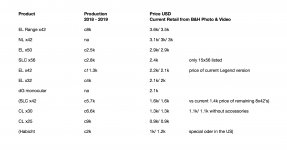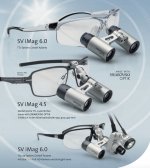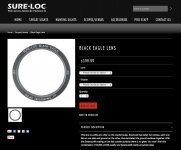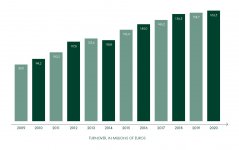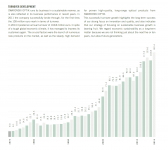John A Roberts
Well-known member

Jan has posted about the relative popularity of the three new NL models in terms of sales in his shop
The breakdown is perhaps somewhat surprisingly, around 60% for the 12x42, 30% for the 10x42, and 10% for the 8x42
see post #14 at: https://www.birdforum.net/threads/swarovski-nl-pure-10x42-are-there-supply-issues.406230/
This prompted me to revisit something that I’ve thought about before. The serial number information that I’ve collected
makes it possible to look at the production/ popularity of the various Swarovski binocular lines over time
Although it doesn’t give the same degree of detail as Jan’s experience, I think that it will be of some interest to many
Notwithstanding that Swarovski doesn’t formally publish detailed information about sales (and nor does Zeiss or Leica),
the particular combination of Swarovski’s serial numbering, along with the use of the Internet to view sales listings, makes the following possible
- - - -
While doing so may not endear me to some at Swarovski (so I won’t be surprised if I don’t receive a Christmas basket!),
posting the information doesn’t put Swarovski at any real comparative disadvantage, especially in relation to Zeiss and Leica
e.g. in many locations Swarovski is the most popular of the three in terms of binocular sales
Additionally, I imagine that all three already informally collect information about relative sales by various means,
including having their sales representatives discuss the topic with larger retailers
Serial Number Construction
As many will be aware, with the serial numbering that was used until September last year:
• the prefix letter indicated the product line or product type
• the first 2 numerals the year of production (add 1930)
• the next 2 numerals the week of production (from 01 to 52), and
• the last 5 numerals were a consecutive serial number (within a 10,000 unit range)
Recent Yearly Production (in thousands of units)
EL x50 - c2.5k (D8839 40387 to D8935 42860 - so from September 2018 to August 2019)
EL x42 - c11.3k (K8837 48490 to K9036 49782) *
EL x32 - c4k (F8816 46281 to F8910 40146) *
SLC x56 - c2.8k (N8841 48935 to N8937 42811) *
SLC x42 - c5.7k (C8904 40861 to C9004 46583)
CL x30 - c6.6k (K8913 54064 to K9009 50525) *
CL x25 - c9k (G8917 57157 to G9027 56892) *
EL Range - c8k (T8903 67270 to T9004 65209) *
Habicht - c2k (A8906 17252 to A9010 19350) **
For a total of 50k+
* the consecutive numbering reset when the limit of the number block was reached e.g. the EL’s numbering ran from 40000 to 49999
** comprises all of the CF models: 8x30, 7x42 and 10x40, in both leatherette and RA
Limitations
The above is the most recent data that I’ve collected. So it’s necessarily about past - but relatively recent - production
The 12 month periods don’t exactly coincide, though they do largely overlap; the range being from early 2018 to mid 2019
And as not all the periods are precisely 12 months, I’ve sometimes rounded slightly up or down
Some Observations
In terms of current offerings, the above predates:
• the introduction of the dG monocular and the NL x42 binocular line
• the updated versions of the CL x25 and the El Range TA, and
• the discontinuation of the SLC x42
The demand for models eventually wanes over time. So sales will change in both absolute and relative terms for earlier and later periods in a production cycle
Knowing unit sales, doesn’t give any idea of unit profitability e.g. in US dollars:
• the $2k EL x32 compared to the $1.1k CL x30, or
• the effect of the set up and teething costs associated with initially producing the newly released $3k NL x42, compared to producing the long established $2.1k EL x42 (now the modified Legend version), and compared to producing the much longer established $1.2k Habicht (the RA 10x40 being the most expensive in the line)
And in considering Swarovski’s production capacity, besides hand-held optics they also manufacture comprehensive lines of both telescopes and telescopic sights
John
The breakdown is perhaps somewhat surprisingly, around 60% for the 12x42, 30% for the 10x42, and 10% for the 8x42
see post #14 at: https://www.birdforum.net/threads/swarovski-nl-pure-10x42-are-there-supply-issues.406230/
This prompted me to revisit something that I’ve thought about before. The serial number information that I’ve collected
makes it possible to look at the production/ popularity of the various Swarovski binocular lines over time
Although it doesn’t give the same degree of detail as Jan’s experience, I think that it will be of some interest to many
Notwithstanding that Swarovski doesn’t formally publish detailed information about sales (and nor does Zeiss or Leica),
the particular combination of Swarovski’s serial numbering, along with the use of the Internet to view sales listings, makes the following possible
- - - -
While doing so may not endear me to some at Swarovski (so I won’t be surprised if I don’t receive a Christmas basket!),
posting the information doesn’t put Swarovski at any real comparative disadvantage, especially in relation to Zeiss and Leica
e.g. in many locations Swarovski is the most popular of the three in terms of binocular sales
Additionally, I imagine that all three already informally collect information about relative sales by various means,
including having their sales representatives discuss the topic with larger retailers
Serial Number Construction
As many will be aware, with the serial numbering that was used until September last year:
• the prefix letter indicated the product line or product type
• the first 2 numerals the year of production (add 1930)
• the next 2 numerals the week of production (from 01 to 52), and
• the last 5 numerals were a consecutive serial number (within a 10,000 unit range)
Recent Yearly Production (in thousands of units)
EL x50 - c2.5k (D8839 40387 to D8935 42860 - so from September 2018 to August 2019)
EL x42 - c11.3k (K8837 48490 to K9036 49782) *
EL x32 - c4k (F8816 46281 to F8910 40146) *
SLC x56 - c2.8k (N8841 48935 to N8937 42811) *
SLC x42 - c5.7k (C8904 40861 to C9004 46583)
CL x30 - c6.6k (K8913 54064 to K9009 50525) *
CL x25 - c9k (G8917 57157 to G9027 56892) *
EL Range - c8k (T8903 67270 to T9004 65209) *
Habicht - c2k (A8906 17252 to A9010 19350) **
For a total of 50k+
* the consecutive numbering reset when the limit of the number block was reached e.g. the EL’s numbering ran from 40000 to 49999
** comprises all of the CF models: 8x30, 7x42 and 10x40, in both leatherette and RA
Limitations
The above is the most recent data that I’ve collected. So it’s necessarily about past - but relatively recent - production
The 12 month periods don’t exactly coincide, though they do largely overlap; the range being from early 2018 to mid 2019
And as not all the periods are precisely 12 months, I’ve sometimes rounded slightly up or down
Some Observations
In terms of current offerings, the above predates:
• the introduction of the dG monocular and the NL x42 binocular line
• the updated versions of the CL x25 and the El Range TA, and
• the discontinuation of the SLC x42
The demand for models eventually wanes over time. So sales will change in both absolute and relative terms for earlier and later periods in a production cycle
Knowing unit sales, doesn’t give any idea of unit profitability e.g. in US dollars:
• the $2k EL x32 compared to the $1.1k CL x30, or
• the effect of the set up and teething costs associated with initially producing the newly released $3k NL x42, compared to producing the long established $2.1k EL x42 (now the modified Legend version), and compared to producing the much longer established $1.2k Habicht (the RA 10x40 being the most expensive in the line)
And in considering Swarovski’s production capacity, besides hand-held optics they also manufacture comprehensive lines of both telescopes and telescopic sights
John
Last edited:





